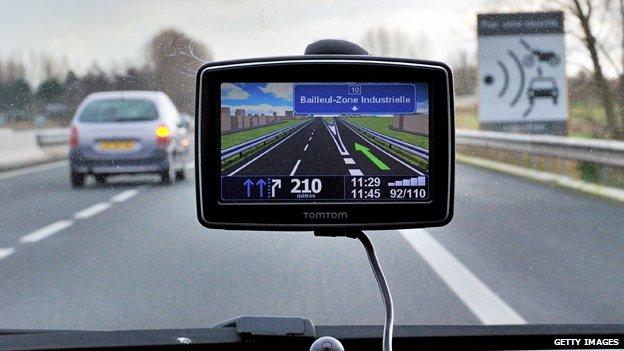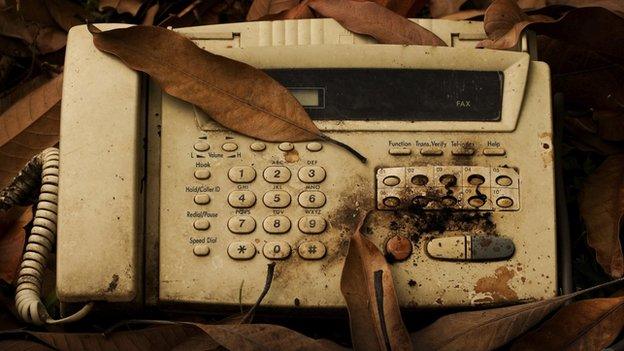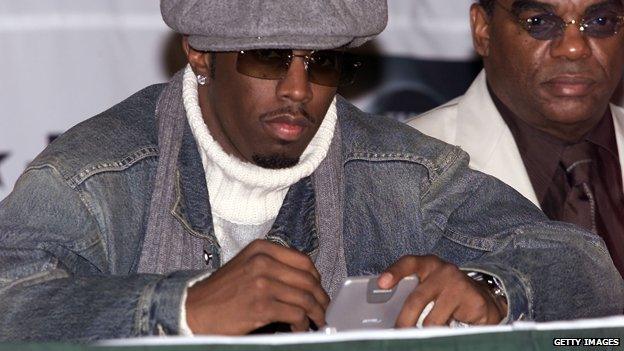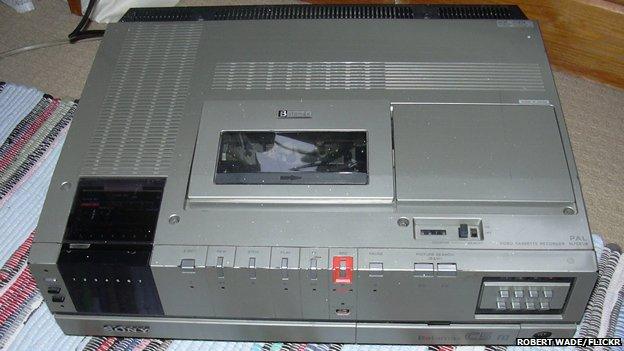The road to obscurity
- Published

The decline of the standalone satnav is an object lesson in realising that the next big thing may not be big for very long, writes Ross Davies.
The Office for National Statistics (ONS) has taken the standalone satnav out of its basket of goods used to gauge UK inflation. People aren't buying enough of them.
The smartphone has been killing the satnav for some time.
In October 2009, when Google announced that its Android 2.0 operating system would support Google Maps Navigation, the shares in manufacturers like Garmin and TomTom plunged. At the same time, more and more cars have them built in.
In this case, the idea of navigating using satellite information in the car hasn't become unpopular, but a particular object for doing it has.

"It's no surprise," says Paul Davies, senior technology and leisure analyst at Mintel. "Just 39% of consumers now have a satnav in their home, down from 46% some 18 months ago."
It's only been eight years since the standalone satnav was first included in the ONS's consumer prices index (CPI) basket. In 2007, it was added alongside mobile ringtones and flat-panel TVs - at the expense of VHS cassette players and "ghetto blasters".
There was a sustained period of popularity before 2007 - marked by endless news stories about misdirected cars getting stuck in alleys and rivers - but the satnav does seems to have had a rather short window of utility.
The march of technology is remorseless.

Who still uses...
Pagers - In 2014 the Daily Mail reported, external that government departments had spent £500,000 on pagers since the 2010 election. A government source explained that there were many circumstances - such as intelligence briefings - where mobile phones were banned and pagers were the only replacement.
Faxes - The Japanese show an abiding affection for the fax machine, as reported by the Magazine in 2012, external (a survey quoted in the article claimed that 85% of Japanese businessmen say the machine is a crucial business tool)
Laserdiscs - The BBC broadcaster Danny Baker told an interviewer in 2014, external that he still had "thousands of them" - but added that he no longer had a machine to play the discs on.

Take the pager. Remember them? Once the preserve of doctors - at least on television - for a short time in the mid-late 1990s, having a bleeper clamped to one's belt was the ultimate comms status symbol. Then they vanished.
In 2001, Motorola - who had cornered the market - had discontinued production, consigning the device to history. The ubiquity of the mobile phone pushed the pager right back into its niche and left it as a cultural token of irrelevance. In comedy 30 Rock, the loser boyfriend is a pager salesman.
Marketed as a kind of computerised Filofax - complete with an inbuilt diary function and address book - the electronic organiser also enjoyed a brief window of utility in the same decade.

P Diddy checks his pager, 2002

Former home secretary Jack Straw checks his pager during a political speech, 1998
The MiniDisc - launched by Sony in 1992 as a micro alternative to CDs and cassette tapes - occupies a slightly different category. Much loved by its purchasers, it never made the jump to mainstream appeal. In its first year on the market, only 50,000 players were sold.
That didn't stop Sony describing 1998 as the "Year of the MiniDisc". In fact, the first MP3 players had been launched by then, and the debut of the iPod in 2001 changed everything. Minidiscs continued in professional use but the last plopped off the production line in 2013.
Going back to the early-mid 1980s, the Laserdisc provides another example of a physical media cul-de-sac. A forebear of the DVD and Blu-ray, "DiscoVision" - as it was marketed in the US - marketed itself on its superiority to VHS.
But a culmination of high retail costs, cumbersome discs - which weighed more than half a pound - and no recording option, contributed to scant popularity among households.
So are these short "windows of utility" always going to get shorter?

Alas poor Betamax
"I don't think all categories of technology necessarily face obsolescence, at least not in the near future," says Jason Stamper, an analyst at 451 Research, and former technology editor of the New Statesman.
"For example, the wireless radio was invented around 1900 and many people still listen to them today. But certainly, gadgets that are too niche are always threatened by more general-purpose devices that can do far more for not a lot more money."
It's a lesson for anyone buying a dedicated e-reader. Futurologists have been predicting for some time that cheaper tablets will soon make the idea of a device just for reading e-books seem, well, rather quaint.
The obsolete devices live on in TV nostalgia shows and other cultural arenas.
In the 1970s, the Goblin Teasmade - complete with an inbuilt alarm clock - was a common feature in some British households. But not for long.
Disenchanted by the automatic tea-maker's alleged unpredictability - brews tended to be either very strong or too weak - users soon discovered they were much better doing the job themselves.
While production of the Teasmade dropped off, it is currently enjoying something of a revival as a retro novelty item.

Sony minidisc player
For children of the 1980s, SodaStream was a must-have device. Promoted by the famous slogan "Get busy with the Fizzy", the machine allowed people to make their own carbonated drinks in a variety of different flavours.
It was eventually dropped by Cadbury-Schweppes in 1996, although the brand has seen its stock rise again recently under new ownership, with an emphasis on being healthier.
For those wondering, current SodaStream chief executive Daniel Birnbaum has admitted that the tang of today "is not what you tasted when you were a kid".
The status of some devices is harder to define.
Many would assume that the fax machine - synonymous with office spaces of the 1980s and 1990s - had long bitten the technological dust as a result of email.
Yet, for some, faxing continues to trump web-based alternatives, particularly when it comes to the transmission of sensitive documents.
To this day, it is repeatedly reported that Premier League football transfer activity is still accompanied by the clunking and beeping of the common fax machine.
But then there's the likes of Blu-ray. It's conceivable that the relatively new-fangled HD format, which was only added to the ONS's shopping basket in 2010, might miss the cut in a few years.
That would be a short window of utility.

More from the Magazine
Once there was a video rental store on every high street. Then DVDs came along, making VHS video obsolete.
But it wasn't long before the rise of online film streaming put even DVD rental stores out of business.
How do video and DVD rental stores still survive? (January 2015), external

Subscribe to the BBC News Magazine's email newsletter to get articles sent to your inbox.